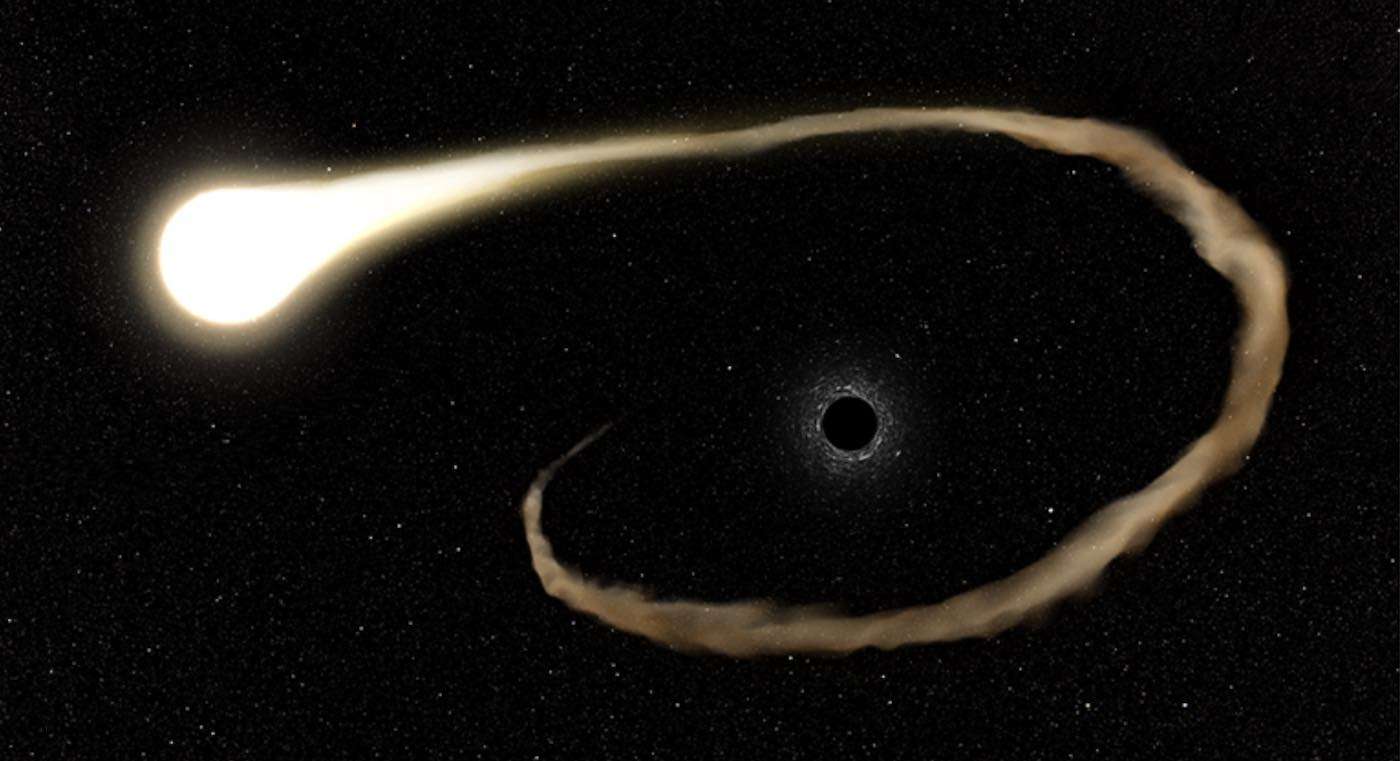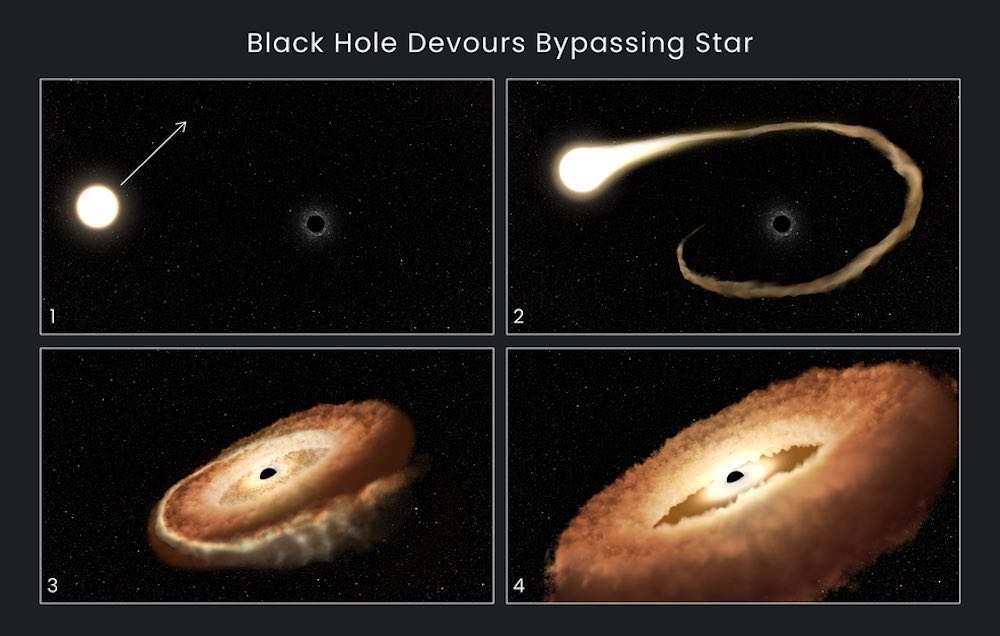Ancient Cave Markings Finally Decoded By Amateur Scientist-A Calendar of When Animals Mated 20,000 Years Ago
An amateur scientist has decoded the meaning of cave markings used in Ice Age drawings-notations that recorded birth and mating of species.

Black holes are gatherers, not hunters. They lie in wait until a hapless star wanders by.
When the star gets close enough, the black hole's gravitational grasp violently rips it apart and sloppily devours its gasses while belching out intense radiation.
Now, astronomers using NASA's Hubble Space Telescope have recorded a star's final moments in detail, as it gets gobbled up by a black hole.
Although the black hole encounters are violent, they're known as "tidal disruption events"—and astronomers are using Hubble to find out the details of what happens when a wayward star plunges into the gravitational abyss.
The ‘AT2022dsb tidal event' can't be photographed up-close with Hubble because the munched-up star is nearly 300 million light-years away. But astronomers used Hubble's ultraviolet sensitivity to study the light from the shredded star—which include hydrogen, carbon, and more, all forensic clues to the black hole homicide.
About 100 tidal disruption events around black holes have been detected by astronomers using various telescopes. NASA recently reported that they spotted another black hole tidal disruption event on March 1, 2021, from another galaxy.
Data was collected in X-ray light from an extremely hot corona around the black hole, after the star was already torn apart.
"There's a lot of information that you can get from the ultraviolet spectra," said Emily Engelthaler of the Center for Astrophysics | Harvard & Smithsonian (CfA).
"We're excited because we can get these details about what the debris is doing. The tidal event can tell us a lot about a black hole."

Changes in the doomed star's condition are taking place on the order of days or months, but for any given galaxy with a quiescent supermassive black hole at the center, NASA believes shedding happens only a few times every 100,000 years.
This AT2022dsb stellar snacking event was first caught on March 1, 2022 by the All-Sky Automated Survey for Supernovae (ASAS-SN or "Assassin"), a network of ground-based telescopes that surveys the extragalactic sky roughly once a week for violent, variable, and transient events that are shaping our universe. This energetic collision was close enough to Earth and bright enough for the Hubble astronomers to do ultraviolet spectroscopy over a longer than normal period of time.
"Typically, these events are hard to observe. You get maybe a few observations at the beginning of the disruption when it's really bright. Our program is different in that it is designed to look at a few tidal events over a year to see what happens," said Peter Maksym of the CfA. "We saw this early enough that we could observe it at these very intense black hole accretion stages. We saw the accretion rate drop as it turned to a trickle over time."
The Hubble spectroscopic data are interpreted as coming from a very bright, hot, donut-shaped area of gas that was once the star. This area, known as a torus, is the size of the solar system and is swirling around a black hole in the middle.
"We're looking somewhere on the edge of that donut. We're seeing a stellar wind from the black hole sweeping over the surface that's being projected towards us at speeds of 20 million miles per hour (three percent the speed of light)," said Maksym.
"We really are still getting our heads around the event. You shred the star and then it's got this material that's making its way into the black hole. And so you've got models where you think you know what is going on, and then you've got what you actually see. This is an exciting place for scientists to be: right at the interface of the known and the unknown."
The results were reported at the 241st meeting of the American Astronomical Society in Seattle, Washington.
WATCH the NASA video…
BEAM This Steller Story to Star-Gazers on Social Media…
Be the first to comment